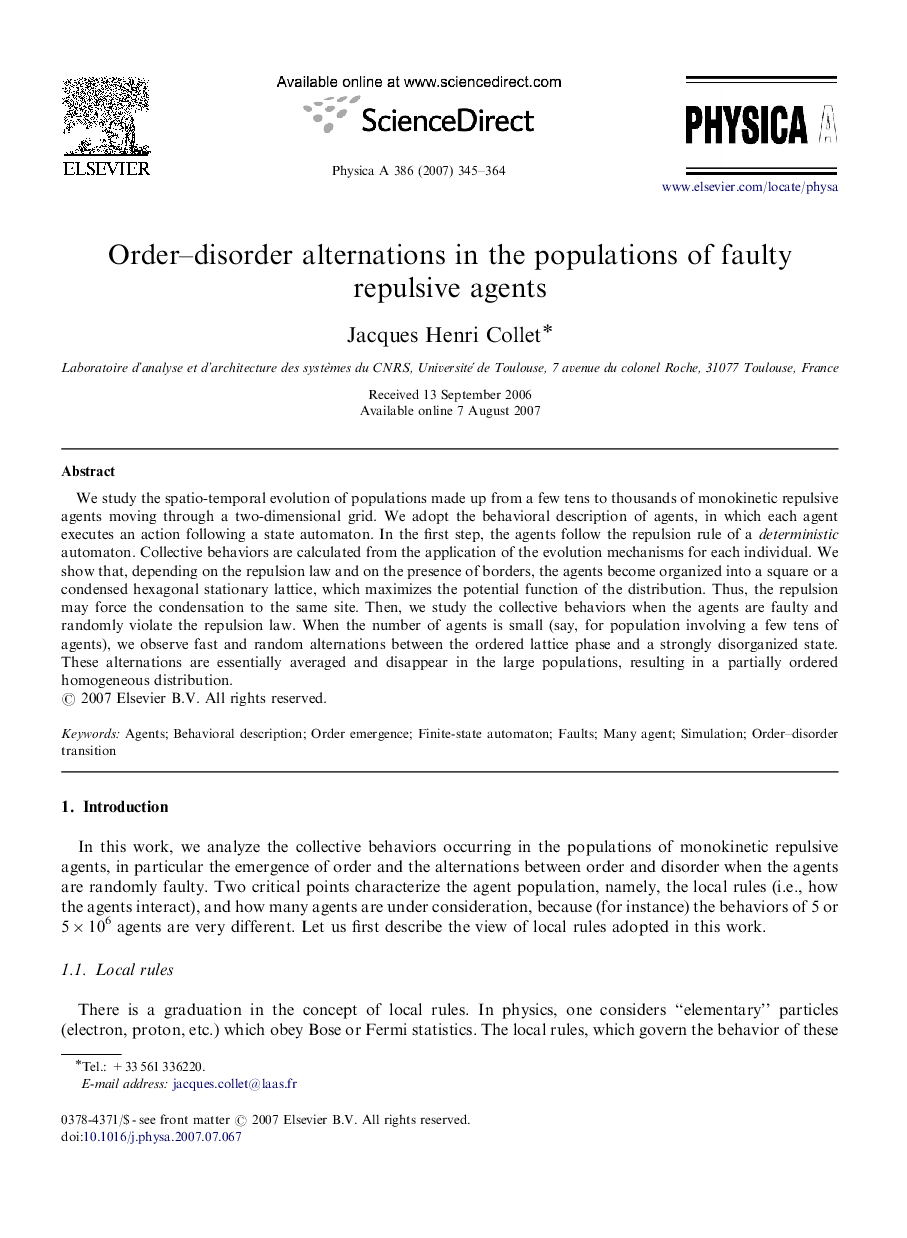| Article ID | Journal | Published Year | Pages | File Type |
|---|---|---|---|---|
| 979511 | Physica A: Statistical Mechanics and its Applications | 2007 | 20 Pages |
Abstract
We study the spatio-temporal evolution of populations made up from a few tens to thousands of monokinetic repulsive agents moving through a two-dimensional grid. We adopt the behavioral description of agents, in which each agent executes an action following a state automaton. In the first step, the agents follow the repulsion rule of a deterministic automaton. Collective behaviors are calculated from the application of the evolution mechanisms for each individual. We show that, depending on the repulsion law and on the presence of borders, the agents become organized into a square or a condensed hexagonal stationary lattice, which maximizes the potential function of the distribution. Thus, the repulsion may force the condensation to the same site. Then, we study the collective behaviors when the agents are faulty and randomly violate the repulsion law. When the number of agents is small (say, for population involving a few tens of agents), we observe fast and random alternations between the ordered lattice phase and a strongly disorganized state. These alternations are essentially averaged and disappear in the large populations, resulting in a partially ordered homogeneous distribution.
Related Topics
Physical Sciences and Engineering
Mathematics
Mathematical Physics
Authors
Jacques Henri Collet,
